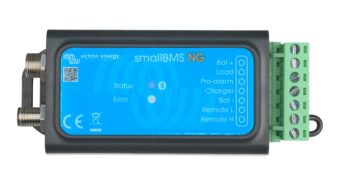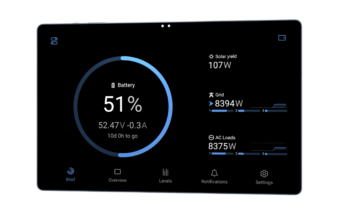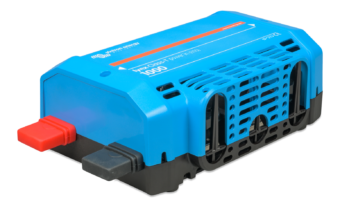We are excited to introduce our new product: the SmallBMS NG.
Building on the SmallBMS, the NG version is designed specifically for Victron Lithium NG batteries and includes several new features.
In addition to the familiar features of the Small BMS, such as load and charge disconnect and the pre-alarm, the SmallBMS NG now also provides detailed per-battery and per-cell measurements from all connected Lithium NG batteries, through VictronConnect.
Bluetooth is now integrated into the BMS itself, rather than in the battery. This means all batteries connect in one place, and the system is monitored from a central BMS.
Another key difference is that with Lithium NG batteries, current measurement is built into the battery. This means there’s no longer a need to add a SmartShunt for current and state of charge (SoC) data. The SmallBMS NG receives this information directly from the batteries, and displays it in VictronConnect.
The SmallBMS NG is a simple and cost-effective alternative to the upcoming VE.Bus BMS NG, ideal for systems that don’t include VE.Bus inverter/chargers.
Please note that the SmallBMS NG is not compatible with VE.Bus devices such as MultiPlus and Quattro. For these systems, the VE.Bus BMS NG is the suitable option and it will be available soon.
For more information, please visit the SmallBMS NG product page.
Marine Parts - 06 May


